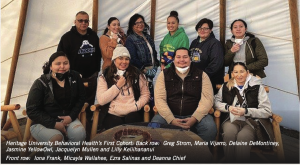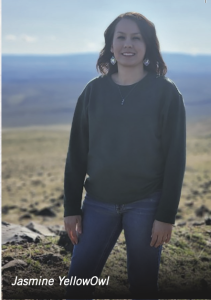Providing Indigenous Providers
Heritage’s new behavioral health program will connect trained indigenous professionals with the indigenous community, through holistic focus and traditional ways.
In August 2019, Heritage educators and Yakama tribal leaders met about a serious problem: the mental health crisis among indigenous people, in particular in the Yakima Valley and Columbia Basin.
More importantly, they were about to discuss a solution – a model to be presented by the Northwest Portland Area Indian Health Board (NPAIHB).
The facts were known: Western medicine hasn’t been good at understanding indigenous people or providing real help. A better solution is needed.
Sue Steward, NPAIHB deputy director, was there to share details of what had been working in another state for years. With far more remote and underserved communities, Alaska had a program in place that provided quality health services to rural and culturally distinct populations through indigenous people specifically trained to provide those services.
For indigenous people who need help with mental, emotional and behavioral issues, finding the “access points,” or ways to identify mental health needs and receive services, is often difficult. Services may be unavailable or inaccessible, and treatment can be severely lacking.
Enter the Community Health Aide Program (CHAP) established in Alaska in the 1950s, an organically grown and implemented program that succeeded in getting health care access to remote communities. More recently, the Indian Healthcare Improvement Act of 2010 made it available in the lower 48 states. Now it was being presented as an option to the Northwest Tribes.
Building the program within a tribal university is a critical component in its efficacy, Steward explained. Northwest Indian College in Bellingham, Wash., was considered creating a similar program centering on chemical dependency issues. It’s the people who reside within the communities who are best able to understand the support their own people need, she said.
The practical question was discussed next. Could Heritage develop a similar training program to create more providers who are themselves indigenous?
What has worked there can work here, Steward told the group. Seed funding was available to build the Heritage curriculum and support the program.
INTEGRATING TRADITIONS OF WELL-BEING
Maxine Janis, Ph.D., associate professor of nursing and the President’s Liaison for Native American Affairs at Heritage, knew it was time to act.
“Delivering to our people has always been approached from a Western education model,” said Janis. “The attempt has always been to deliver it in that way, like, ‘The book said do X, Y and Z.’
“It’s always been through a non-native lens, and the four elements that really comprise well-being
– serving people’s mental, emotional, spiritual and physical needs – are usually not integrated.
“We recognize the need to use a holistic approach to address this crisis, so professionals can go out into the community and help identify where people are out of balance and out of harmony. And it needs to be done in a manner that speaks to our traditions and our community.
“Alaska looked for the natural helpers in the community and trained them to be behavioral health associates. That’s the brilliance of the model.
“We knew this model needed to be our model.”
TRAINING AND SUPPORTING STUDENTS
Two years after the first 2019 meeting, Heritage’s Behavioral Health Aide (BHA) certificate program has become a reality.
Its first cohort of nine students is being trained in a curriculum that uses the principles of the Medicine Wheel – serving mental, emotional, spiritual and physical needs, along with wisdom- seeking processes of caring, relationality, tradition, ceremony, healing, humility, honor and trust.

Corey Hodge, chair of Heritage’s social work department, Dr. Danica Brown of NPAIHB, and Janis developed the curriculum based on BHA certification requirements. Both indigenous, Janis and Brown brought a Northwest Tribes perspective to the curriculum.
Partnering work with the NPAIHB continues. Its staff is involved in recruitment and feedback, supporting students in their professional development, and meeting the needs of the tribal communities.
Brown teaches a BHA class. Dr. Iris PrettyPaint has joined the Heritage faculty as
a nursing instructor and BHA student advisor. Janis and PrettyPaint are co-teaching
the seminar course that integrates the indigenous wellness strategy with all the other BHA coursework.
BEING A COUNSELOR AND ADVOCATE
A behavioral health aide has been described as one of those natural helpers found in every community. They may be best described as a counselor, health educator and advocate.
They address individual and community-based behavioral health needs, including those related to alcohol, drug and tobacco abuse, as well as mental health problems like grief, depression, suicide and related issues. They work under the supervision of licensed clinical social workers.
Their work includes significant detail: referrals, screening assessment, early intervention, crisis intervention, health education, case management, community prevention activities, and postvention following a suicide or a suicide attempt.
“The role can be ideal for both existing students and for people in the community who’d like to expand their knowledge in health care and provide quality behavioral health services in their tribal communities,” said Hodge.
Hodge credits Janis, with her “deep knowledge of the community,” for identifying a number of the “naturals” who are part of the Heritage program’s first cohort.
“In the Alaska model, it might have been the receptionist in a small clinic or that person on the PTA that everyone feels comfortable reaching out to,” said Hodge. “Alaska identified those people, shared the program goals with them, and trained them.”
“They’re community members, ‘homegrown’ counselors, good listeners, advocates, caregivers, natural healers. These are the people who can be perfect in this role if they want to take the next step in their careers.
“As indigenous community members, they already understand a lot of the concepts of the healing focuses for indigenous people.”
She said the program can also be a pathway for students to earn a bachelor’s degree in social work from Heritage.
“The curriculum of the Behavioral Health Education Program falls in line with the philosophy of social work ideals in that the degree empowers students to help others thrive and to overcome challenges.”
FORMING THE BRIDGE BETWEEN
Native people can help native people, said Jasmine YellowOwl, a student in Heritage’s first BHA cohort. As a 2019 Heritage graduate who majored in early childhood studies, YellowOwl currently works at Yakama Nation Tribal School.
She calls herself a “bridge” between students, their families and the school, helping them navigate issues they need help to manage. Her job taps into her natural skills and abilities, as does the work she’ll do as a BHA.
YellowOwl said she finds the “identity” piece of the BHA program extremely intriguing.
“I was always told to be proud to be native, but I saw the issues – homelessness, alcoholism – and I didn’t know what it felt like to be proud.
“The program incorporates a lot of what I try to do in my job now – find ways to see things differently. Some of our youth already come from strong families and traditional ways, and that’s very encouraging.”
YellowOwl said having Janis and PrettyPaint as her teachers is a “super big deal. “
“It’s like grandmothers teaching you in a kind and loving way, like ‘Let me help you see a little differently.’
“And now I will have more of an understanding of what I can do in terms of prevention and intervention skills, in conjunction with knowing even more about our traditional ways.”
YellowOwl plans to put her BHA training to use at YNTS and is considering pursuing a master’s degree in adolescent psychology.
COMMITTED TO THEIR COMMUNITIES
Hodge and Janis expect more indigenous curriculum and content to become part of Heritage’s mainstream social work program.
They also see it as another way a Heritage education can keep people in the area.
“In our rural community, if we can train someone here, they’re much more likely to stay,” said Hodge. “That’s something that our social work program is really good at.
“You can look all over Yakima Valley and the Columbia Basin and see Heritage graduates working there. They’re steeped in the culture and committed to their communities.
“This is really workforce development.”
Janis said people whose work life and sense of purpose have been enhanced by the program will be role models for others.
“Two or three years from now, people from this cohort will be mentoring new students,” she said.
“For the future, maybe even the near future, we’d love to see this expand beyond the Yakima Valley, to find ways of allowing more people to serve their communities in this way.”
